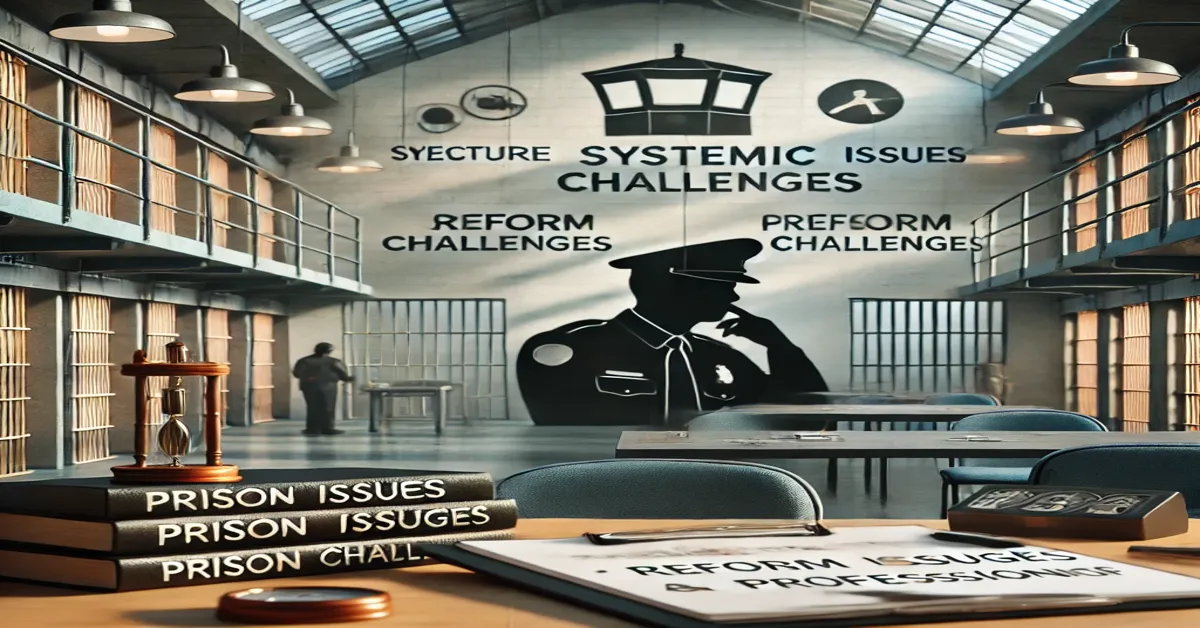In mid-2024, the name Linda De Sousa Abreu became synonymous with controversy and scandal in the UK’s correctional system. Linda De Sousa Abreu, a 30-year-old former prison officer at HMP Wandsworth in South London, was implicated in a case that not only tarnished her career but also raised critical questions about the state of the prison system. A video allegedly showing Linda De Sousa Abreu engaging in sexual activity with an inmate surfaced online, sparking widespread media coverage and intense public scrutiny. This article delves into the details of the case, its implications, and the broader issues it highlights.
Background of HMP Wandsworth
HMP Wandsworth, one of the UK’s largest prisons, has a history steeped in challenges. Established in 1851, it houses over 1,500 inmates, many of whom are serving sentences for serious crimes. The prison has frequently come under fire for issues such as overcrowding, understaffing, and lapses in security. The facility was already under heightened observation in 2024 due to a high-profile escape attempt when the scandal involving Linda De Sousa Abreu further brought its systemic vulnerabilities to light.
The Emergence of the Scandal
The controversy erupted in July 2024 when a video began circulating on social media. The footage allegedly depicted Linda De Sousa Abreu in a compromising position with an inmate inside a cell at HMP Wandsworth. The explicit content and the breach of professional ethics shocked the public and led to an immediate investigation. The incident highlighted not only a severe lapse in professional conduct but also potential weaknesses in the prison’s surveillance and monitoring systems.
Legal Proceedings
Following the release of the video, the Metropolitan Police launched a formal investigation. Linda De Sousa Abreu was arrested on charges of misconduct in public office. The charges stemmed from her alleged abuse of power and violation of her duties as a public officer. During her appearance at Uxbridge Magistrates’ Court, De Sousa Abreu faced significant legal repercussions, including potential imprisonment if convicted.
Public and Media Reaction
The scandal involving Linda De Sousa Abreu garnered extensive media coverage. News outlets reported on the explicit details of the case, while social media platforms were inundated with public reactions. Many expressed outrage, condemning the incident as a glaring example of misconduct within the correctional system. Others called for greater accountability and stricter regulations to prevent such incidents in the future. The scandal also reignited discussions about the challenges faced by prison staff, including inadequate training, stressful working conditions, and the blurred boundaries of professional relationships within such environments.
Implications for HMP Wandsworth
HMP Wandsworth was already grappling with criticisms related to its operations, including overcrowding and security failings. The incident involving Linda De Sousa Abreu amplified these concerns, putting the prison under even greater scrutiny. It became evident that systemic changes were necessary to restore public trust and ensure the integrity of the correctional system. The case underscored the need for enhanced surveillance measures, better staff training programs, and stricter enforcement of professional standards.
Broader Issues in the Correctional System
The scandal is not an isolated incident; rather, it highlights broader systemic issues within the UK’s correctional facilities. These include:
1. Staff Misconduct
Staff misconduct is a recurring issue in prisons, often stemming from inadequate training and oversight. The case of Linda De Sousa Abreu serves as a stark reminder of the consequences of such lapses and the need for robust measures to address them.
2. Security Lapses
The ability of an incident like this to occur within a high-security facility raises questions about the effectiveness of surveillance and monitoring systems. Improved technology and stricter protocols are essential to prevent such breaches.
3. Workplace Challenges
Prison staff often work in stressful and high-risk environments, which can lead to burnout and poor decision-making. Providing adequate support and resources for staff is crucial to maintaining professional standards.
4. Ethical Boundaries
The blurred lines between professional and personal relationships in prisons pose significant risks. Clear guidelines and regular training on maintaining boundaries are necessary to prevent similar incidents.
The Role of Media in Shaping Public Opinion
The media played a pivotal role in amplifying the scandal involving Linda De Sousa Abreu. While some outlets focused on sensationalizing the incident, others used it as an opportunity to highlight systemic issues within the prison system. Public discourse was heavily influenced by the coverage, with many calling for comprehensive prison reforms. Social media also became a platform for discussions, with hashtags related to the scandal trending for weeks.
Lessons Learned and the Path Forward
The case of Linda De Sousa Abreu is a wake-up call for the UK’s correctional system. To prevent such incidents in the future, several measures must be implemented:
1. Enhanced Training Programs
Prison staff should undergo rigorous training that emphasizes ethical behavior, professional boundaries, and stress management.
2. Improved Surveillance
Upgrading surveillance systems and ensuring continuous monitoring can help detect and prevent misconduct.
3. Support Systems for Staff
Providing mental health support and resources for prison staff can mitigate the effects of workplace stress and reduce the likelihood of poor decision-making.
4. Transparent Investigations
Incidents of misconduct should be investigated transparently and addressed promptly to maintain public trust.
Conclusion
The scandal involving Linda De Sousa Abreu has shed light on significant challenges within the UK’s prison system. It serves as a reminder of the importance of maintaining professional standards, ensuring accountability, and implementing systemic reforms. By addressing these issues, the correctional system can work towards rebuilding public trust and providing a safe, ethical environment for both staff and inmates.
FAQs
- Who is Linda De Sousa Abreu? Linda De Sousa Abreu is a former prison officer at HMP Wandsworth who was implicated in a 2024 scandal involving alleged misconduct with an inmate.
- What was the nature of the scandal? The scandal involved a video allegedly showing Linda De Sousa Abreu engaging in sexual activity with an inmate, leading to her arrest and legal charges.
- What legal actions were taken against her? She was arrested by the Metropolitan Police, charged with misconduct in public office, and appeared in court to face the charges.
- How did the public react to the incident? The public expressed outrage and called for stricter regulations and accountability within the prison system to prevent similar incidents.
- What systemic issues did the scandal highlight? The incident underscored issues such as staff misconduct, security lapses, workplace challenges, and the need for clearer ethical boundaries in correctional facilities.
- What measures can prevent such incidents in the future? Implementing enhanced training programs, improving surveillance systems, providing staff support, and ensuring transparent investigations are crucial steps towards preventing similar incidents.









